The passing of every old man or woman means the passing of some tradition, some knowledge of sacred rites possessed by no other… Consequently the information that is to be gathered, for the benefit of future generations, respecting the mode of life of one of the great races of mankind, must be collected at once or the opportunity will be lost for all time
– Edward S. Curtis
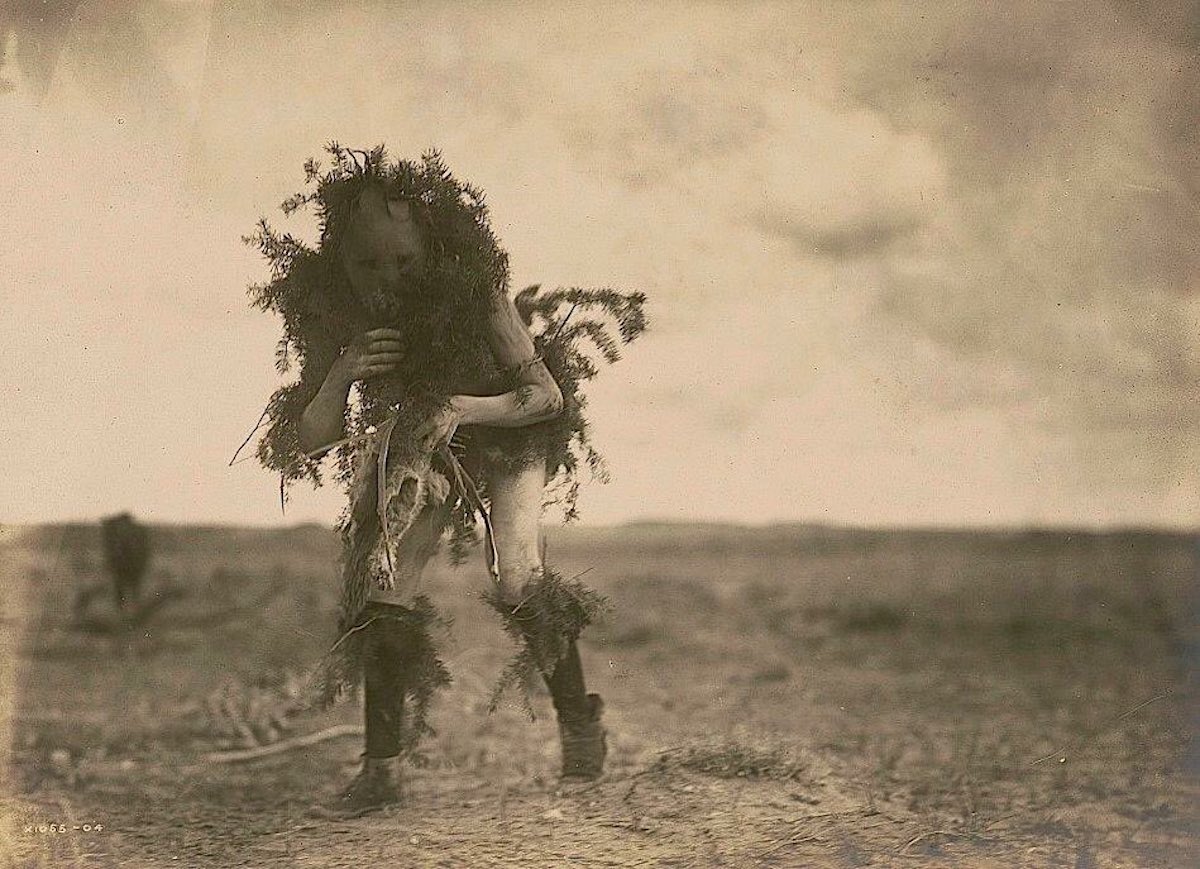
Edward S. Curtis. Tó Neinilii (Rain God), Yebichai ceremonial dancer, Navajo, 1904.
Edward Curtis produced 20 volumes and 1,500 photographs for his work chronicling the lives of Native Americans for his opus The North American Indian, a record to a people he called “a vanishing race”. Published between 1907 and 1930, the collection comprises narrative text and photogravure plates.
His pictures of ceremonial masks speak of the tribes’ rich culture and spirituality. Here we look at his pictures of shrines, tributes and prayer. A caption to one of his pictures explains what he was looking for and hoping to record:
Scattered throughout the Indian country are found spots that are virtually shrines. These are often boulders or other rocks which through some chance have been invested with mythic significance, and to them priest and war-leaders repair to invoke the aid of the supernatural powers. The half-buried bowlder on which the suppliant stands is accredited with the power of revealing to the warrior the foreordained result of his projected raid. Its surface bears what the Indians call the imprint of human feet, and it is owing to this peculiarity that it became a shrine. About it the soil is almost completely worn away by the generations of suppliants who have journeyed hither for divine revelation
Between these images we’ve included some of Curtis’s words from the book Prayer to the great mystery : the uncollected writings and photography of Edward S. Curtis by Curtis, Edward S., 1868-1952.
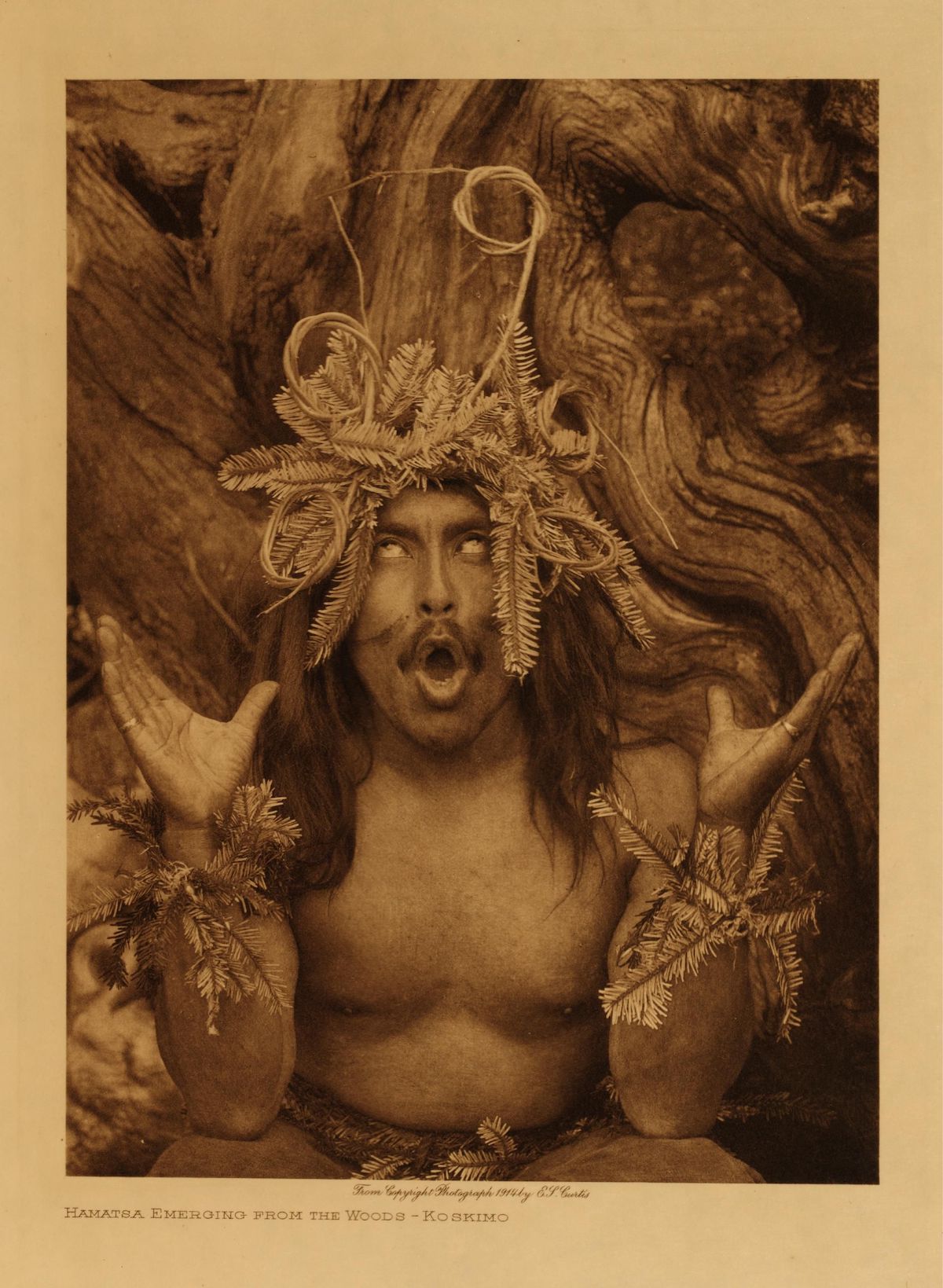
Hamatsa Emerging from the Woods – Koskimo
Now the earth was not still; it twisted and turned and rolled so much that Chuwutumaka put the great sky over it. Then he made a big spider, which spun ropes that held the earth in place. When the spider was done, all was still. And yet, all around was darkness, endless darkness. Sure, Chuwutumaka thought, there should be light, that my beings may see. So he fashioned a clay bowl and filled it with water, which he allowed to become hard. Then he tossed the contents of the bowl into the sky, and it became the sun. In like manner, he made the moon and, finally, the stars, which he drew forth by spraying water from his mouth into the sky. Having finished that which was above, Chuwutumaka turned his attention again to earth, which he made beautiful by giving life to all things green and fruitful. The sky came down then and met the earth, and from their union a god was born, Suuhu, Elder Brother. Then came Coyote, child of Sun and Moon. These two deities had divine powers, and they soon made use of them.
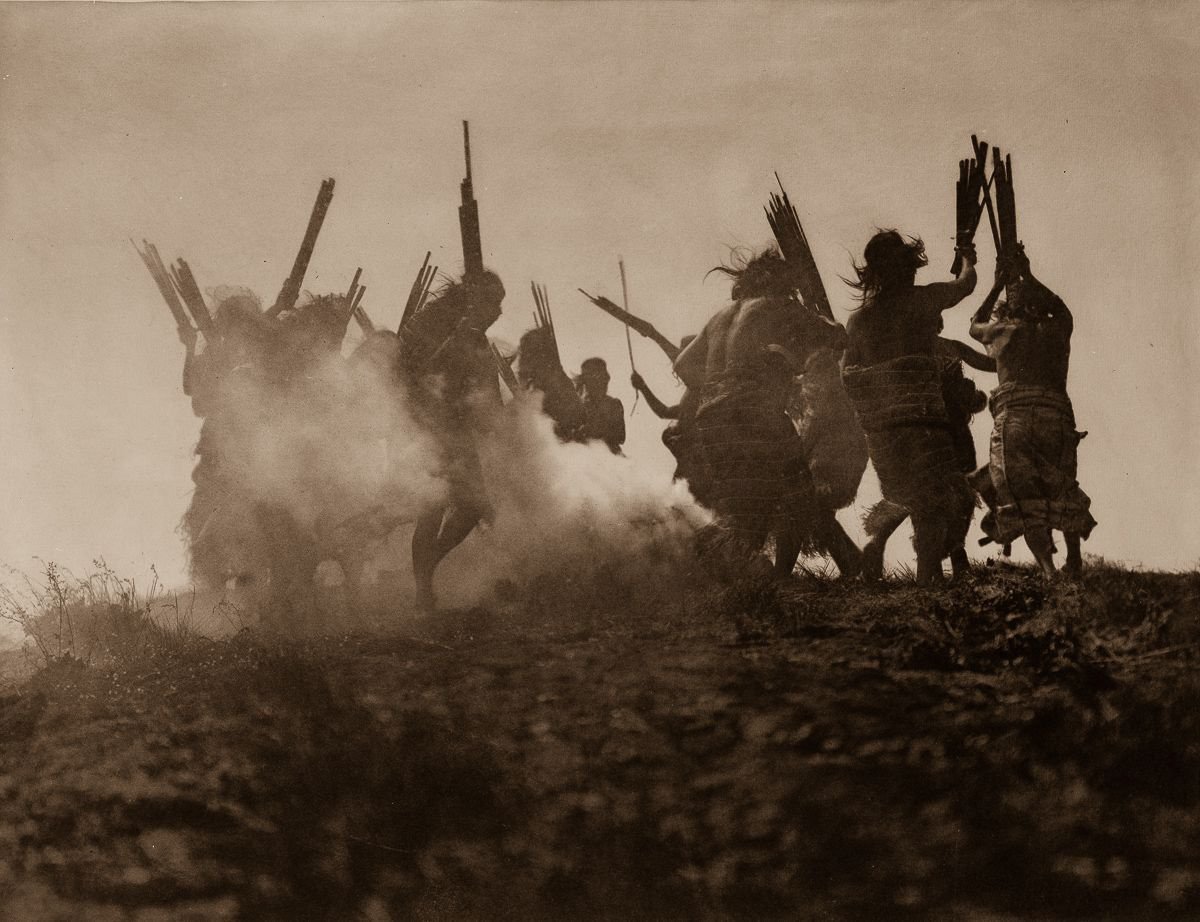
Above: Dancing to Restore an Eclipsed Moon – Qágyuhl. Original Caption:
It is thought that an eclipse is the result of an attempt of some creature in the sky to swallow the luminary. In order to compel the monster to disgorge it, the people dance round a smoldering fire of old clothing and hair, the stench of which, rising to his nostrils, is expected to cause him to sneeze and disgorge the moon.
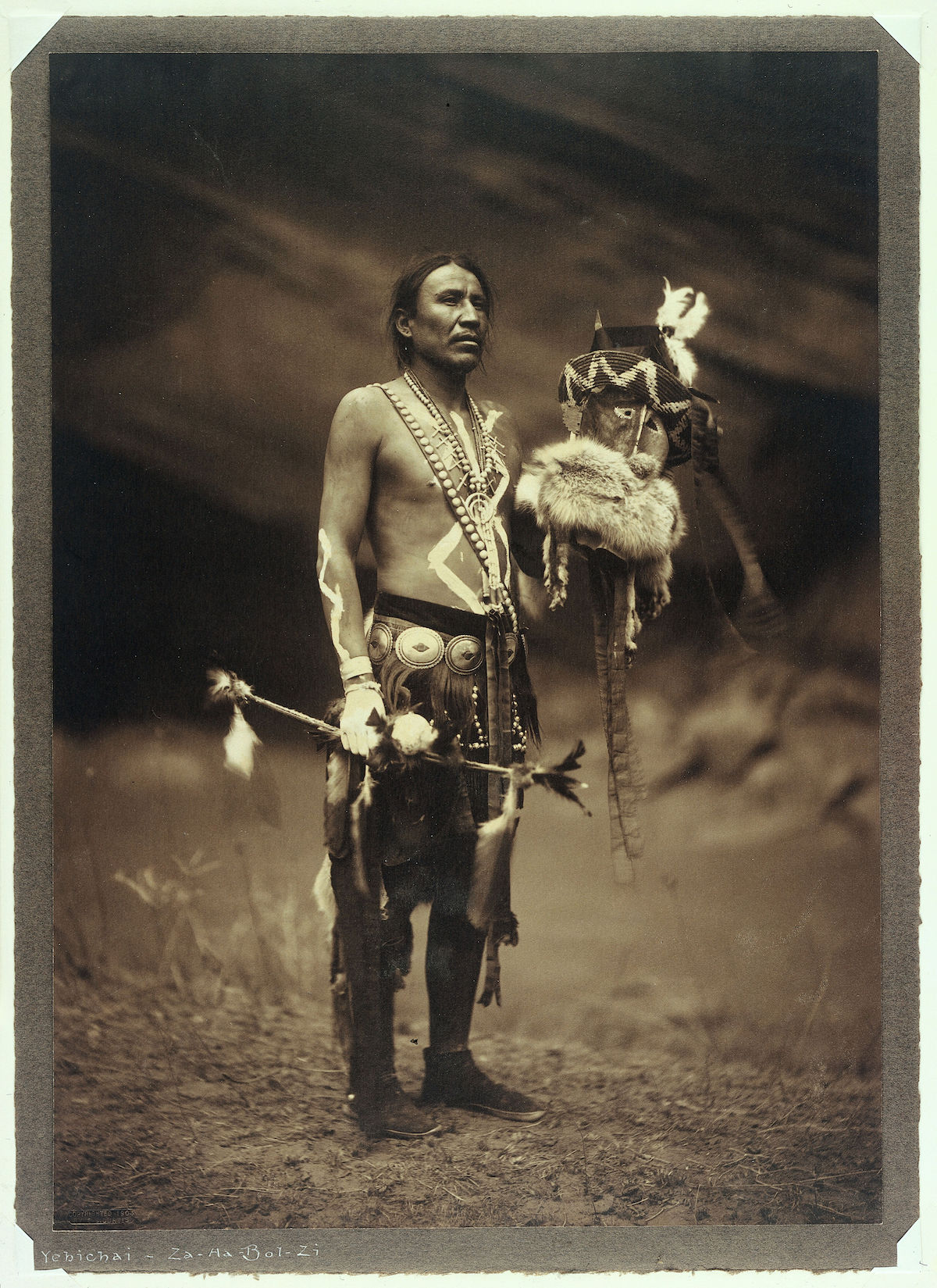
A Navajo man in ceremonial dress representing the Yebichai god Zahabolzi (Zahadolzha?). Photograph by Edward S. Curtis, 1904. Curtis, Edward S., 1868-1952. Date- 1904
The religion of the Rechabites is apparently the original Yahveh cult, whose most obvious feature is a religious consecration of the nomad life in the steppes with an outspoken aversion to all civilization as an aberration from the God- ordained estate of life.
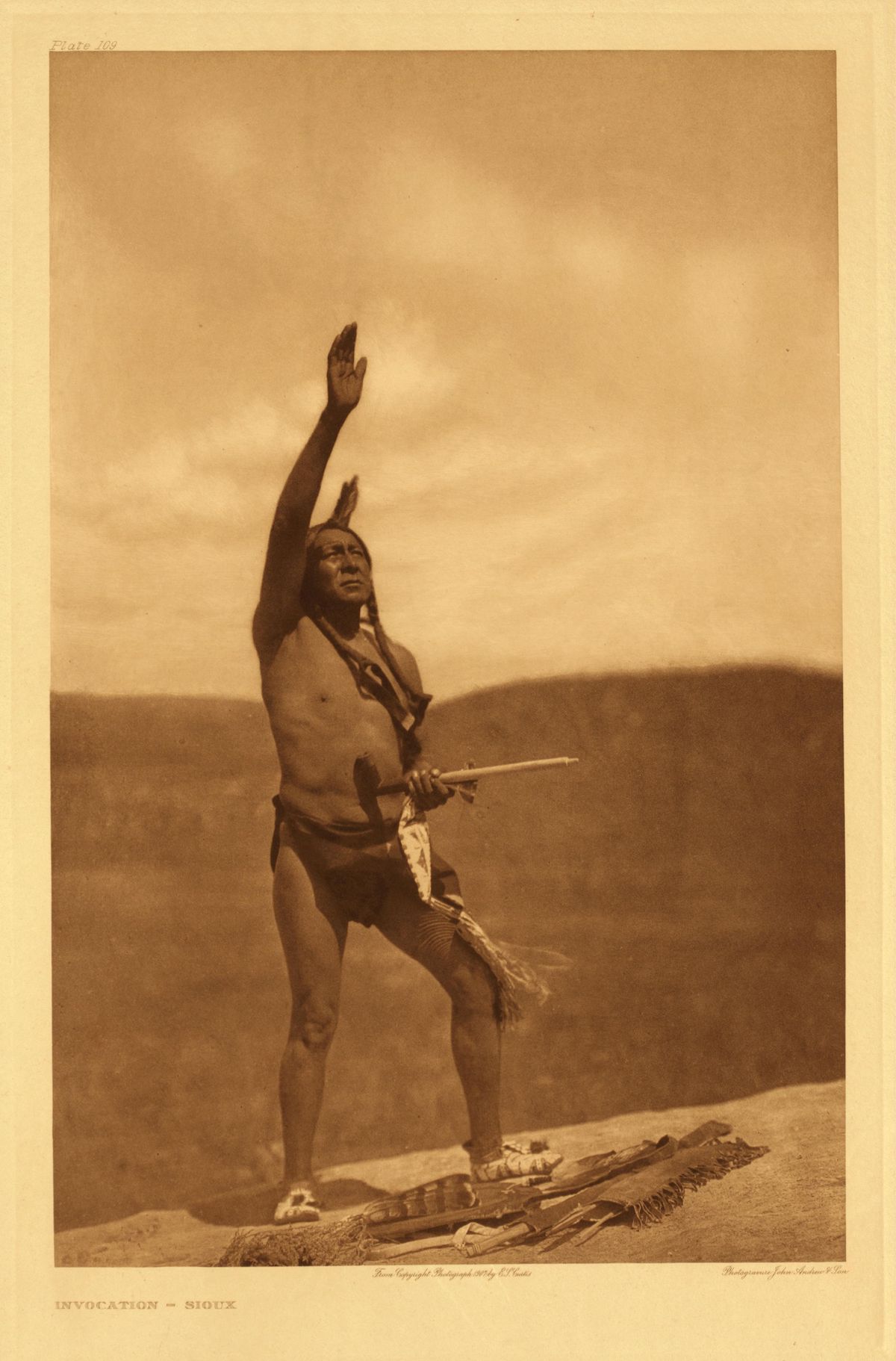
Invocation – Sioux
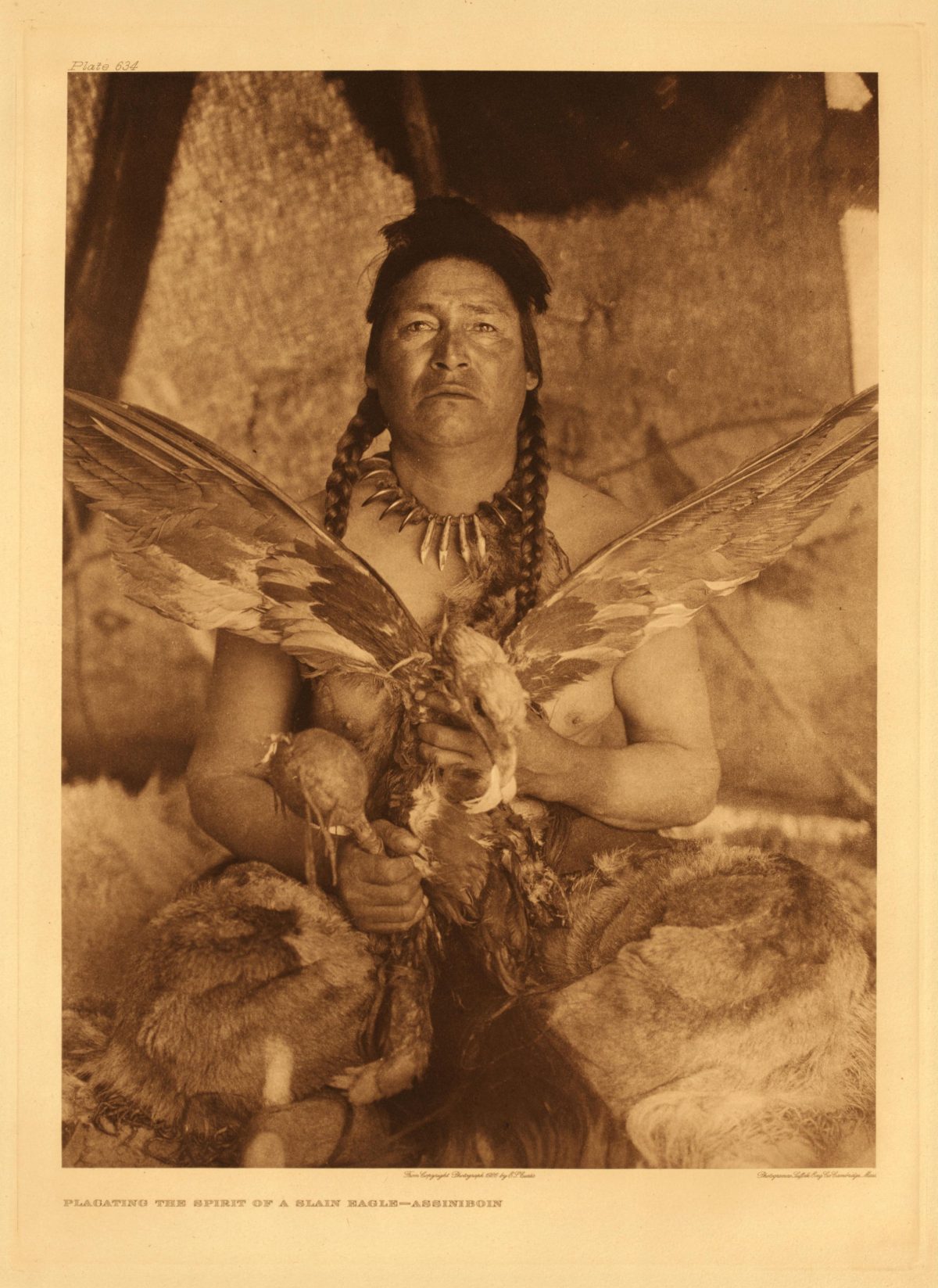
These various tribes have been broadly termed, with the Pueblos, the sedentary Indians of the Southwest…. As a rule the extent of their Christianization has been their willingness to add another god to their pantheon.
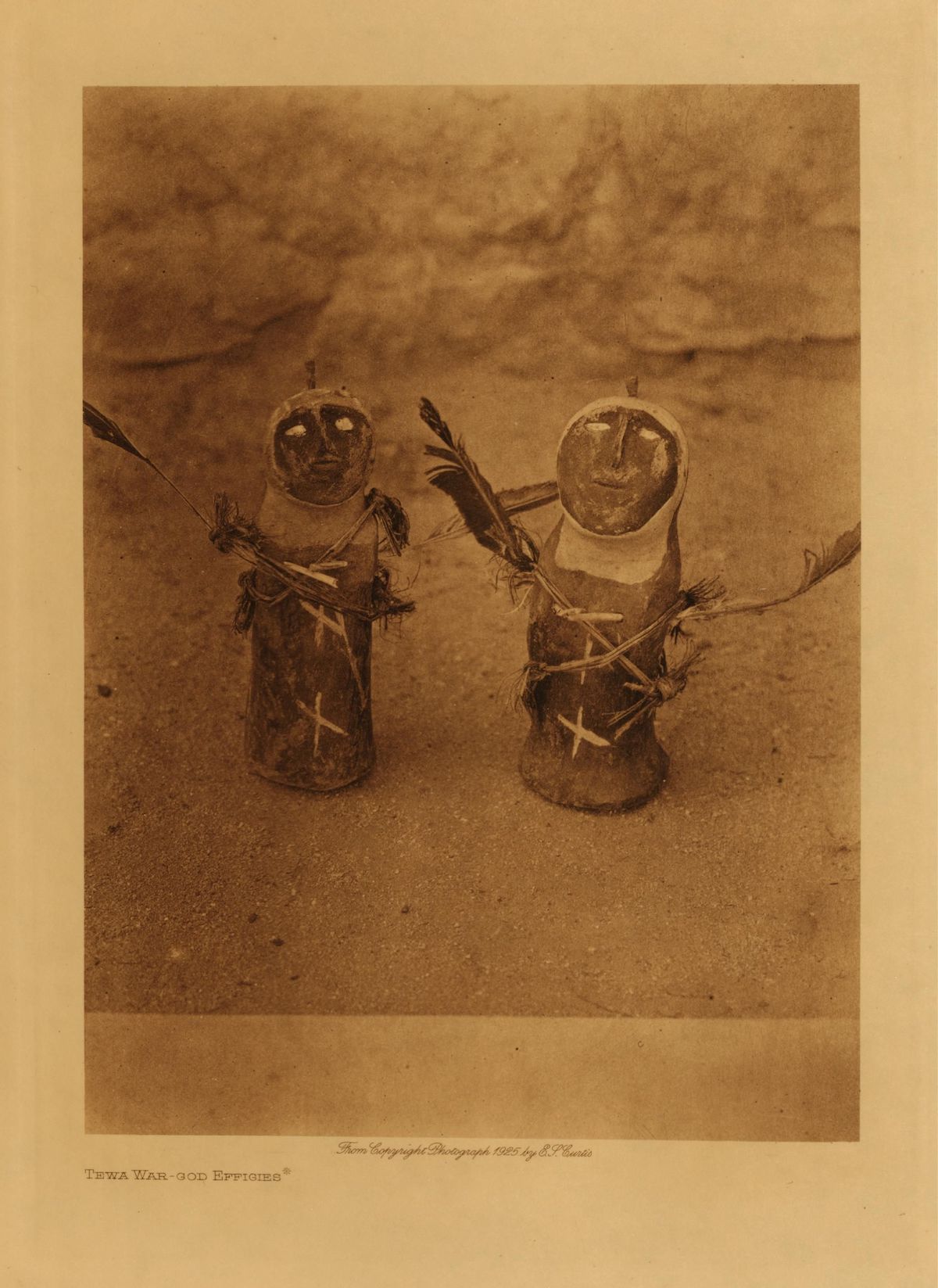
Tewa War-god Effigies
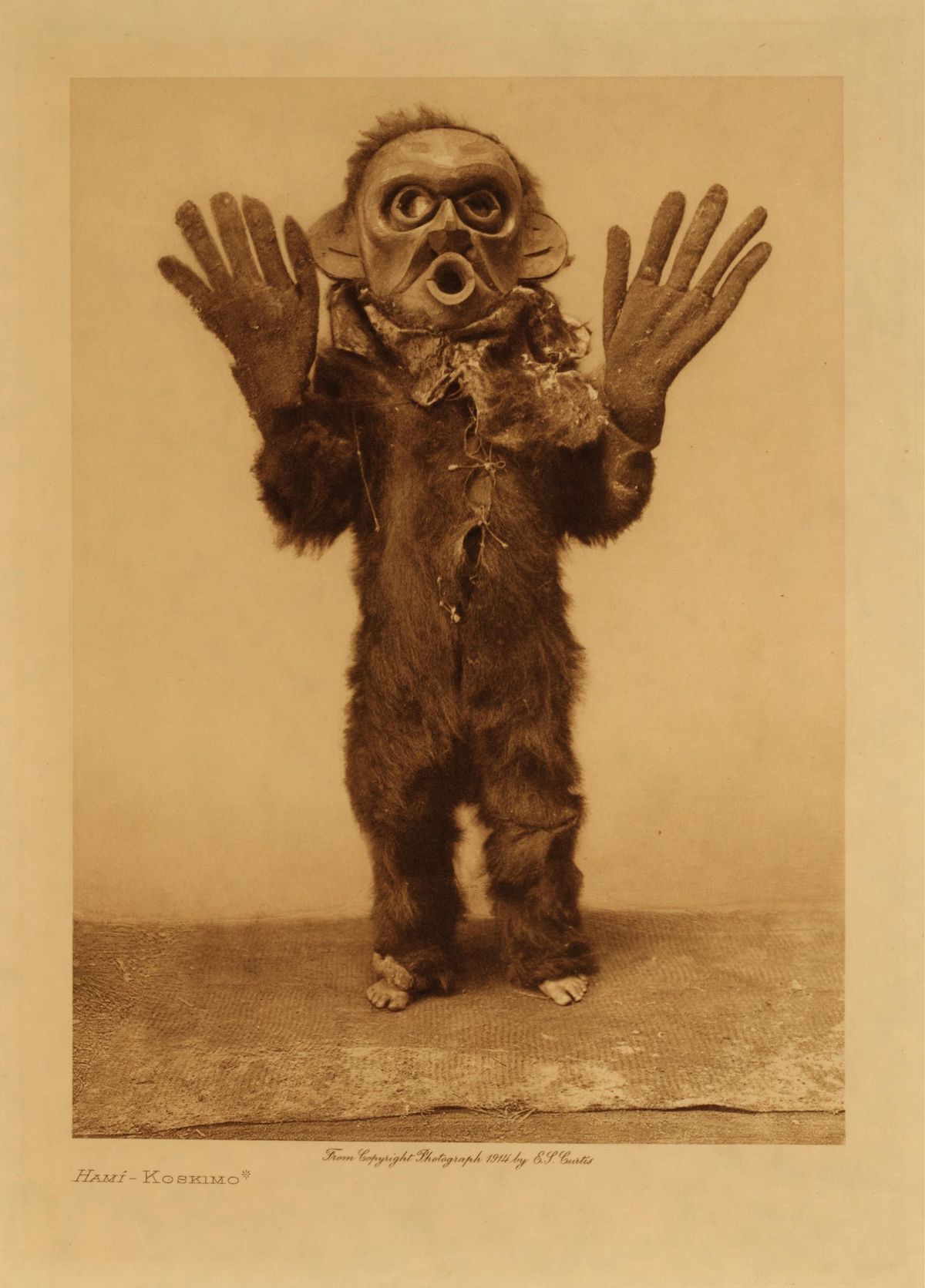
Hamí – Koskimo
The Payooke, or Summer Society, is held in very high esteem, for its function is to pray for rain, and for the growth of the cultivated and the wild. They also pray for the good of the world, regardless of tribe or race. At the summer solstice, the summer cacique and his delegates make a pilgrimage to a lofty peak about twenty miles west of the pueblo. On this mountain, known as Tsi-kumu-pi, Obsidian-Covered Mountain, the sacred shrine of Yellow Cloud Man is located.
After he grew up, Numak-mahana said that he was going away, for he had lived long with them, eating the same food, drinking the same water, laughing when they laughed, sorrowing when they sorrowed. He told them that when they were in need of food, they should pray to the turtle, and buffalo would be sent to them. When they were in danger, they should call his name, One Man, and help would come; and if ever the Mandan dwindled to only a few people, who wished to die together, then they should turn the turtles on their backs, sing a song, which he now gave them, and strike the drums once. Numak-mahana then went away to the south.
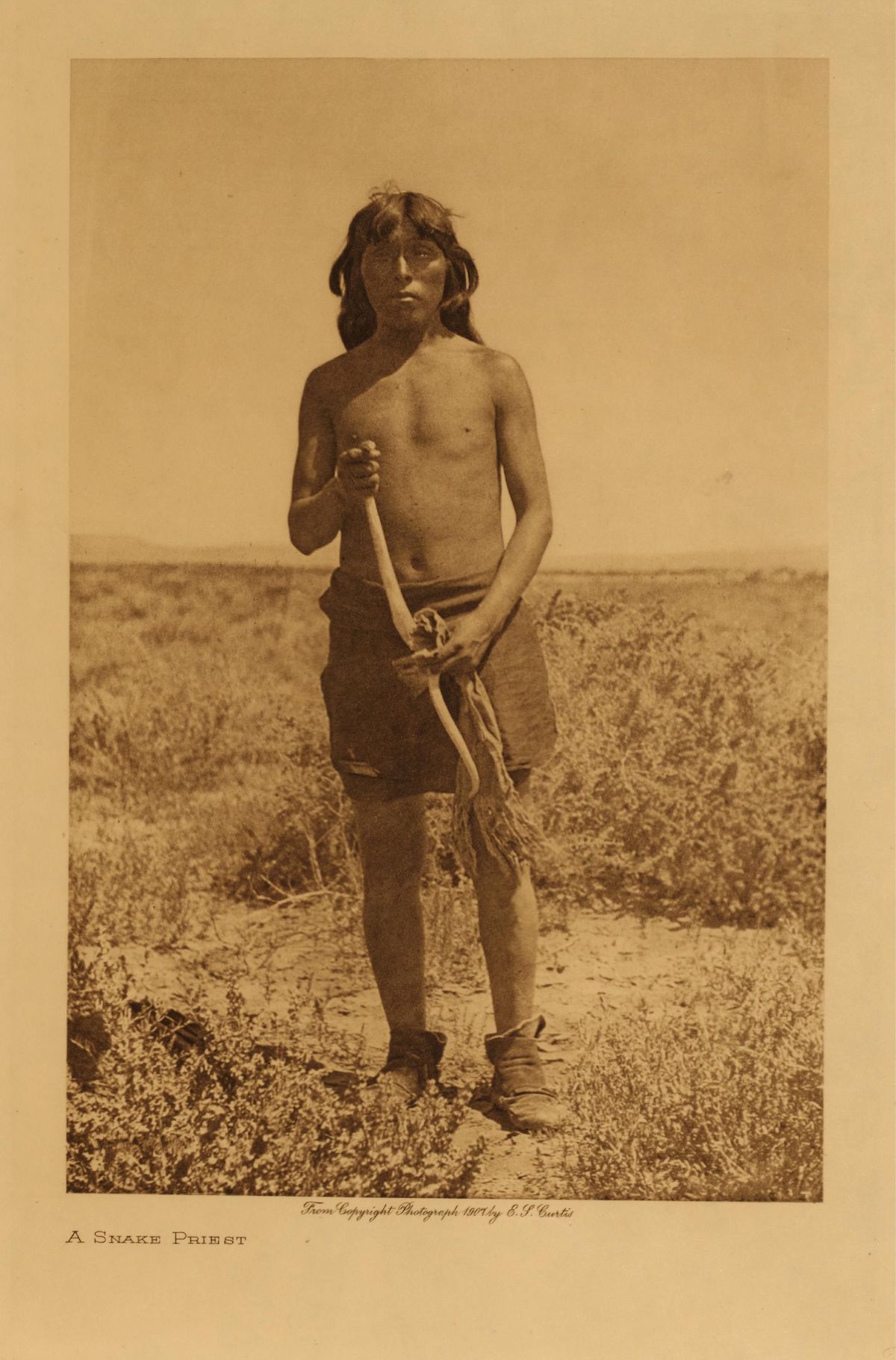
A Hopi Snake Priest
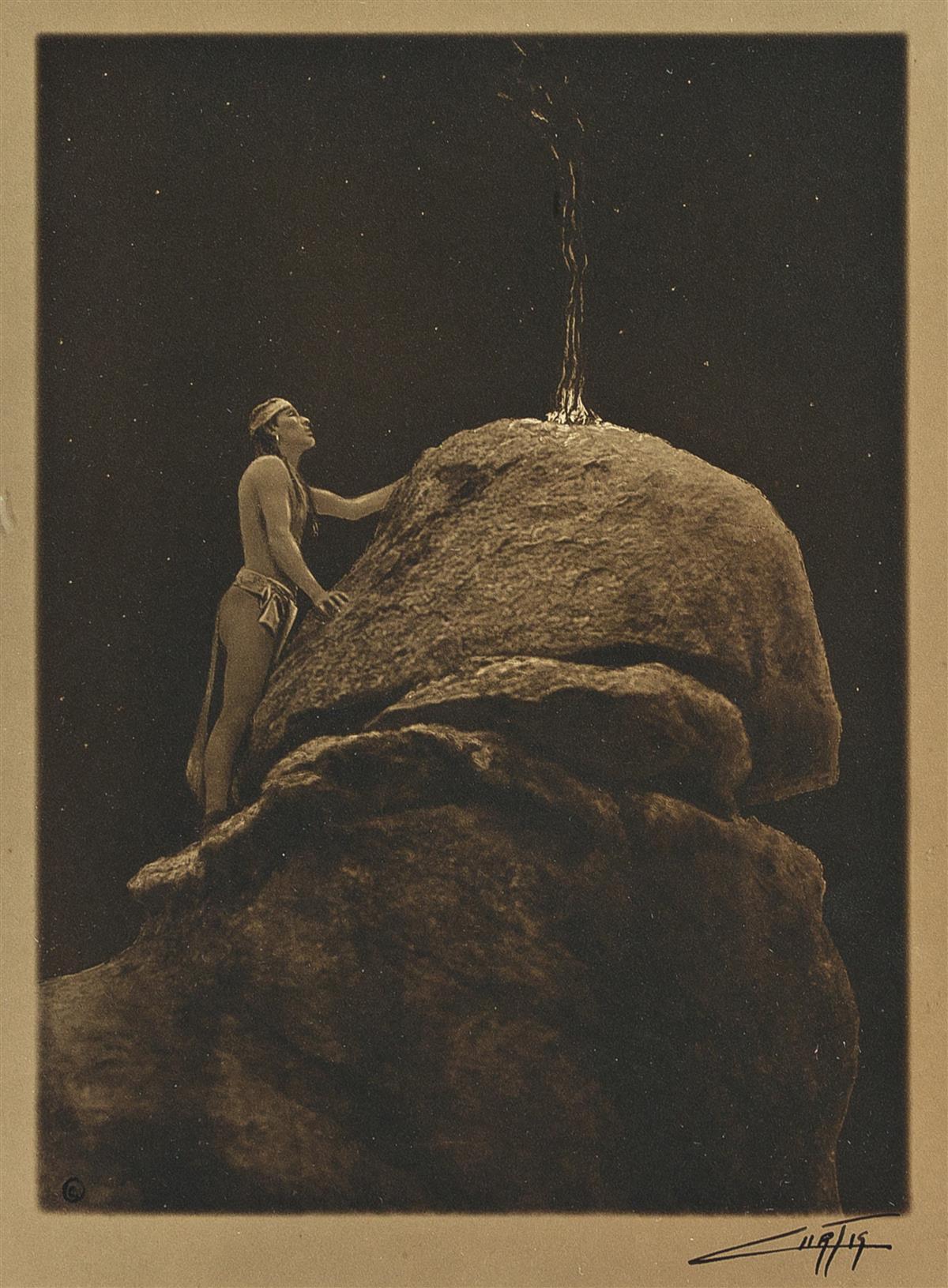
Signal Fire to the Mountain God.
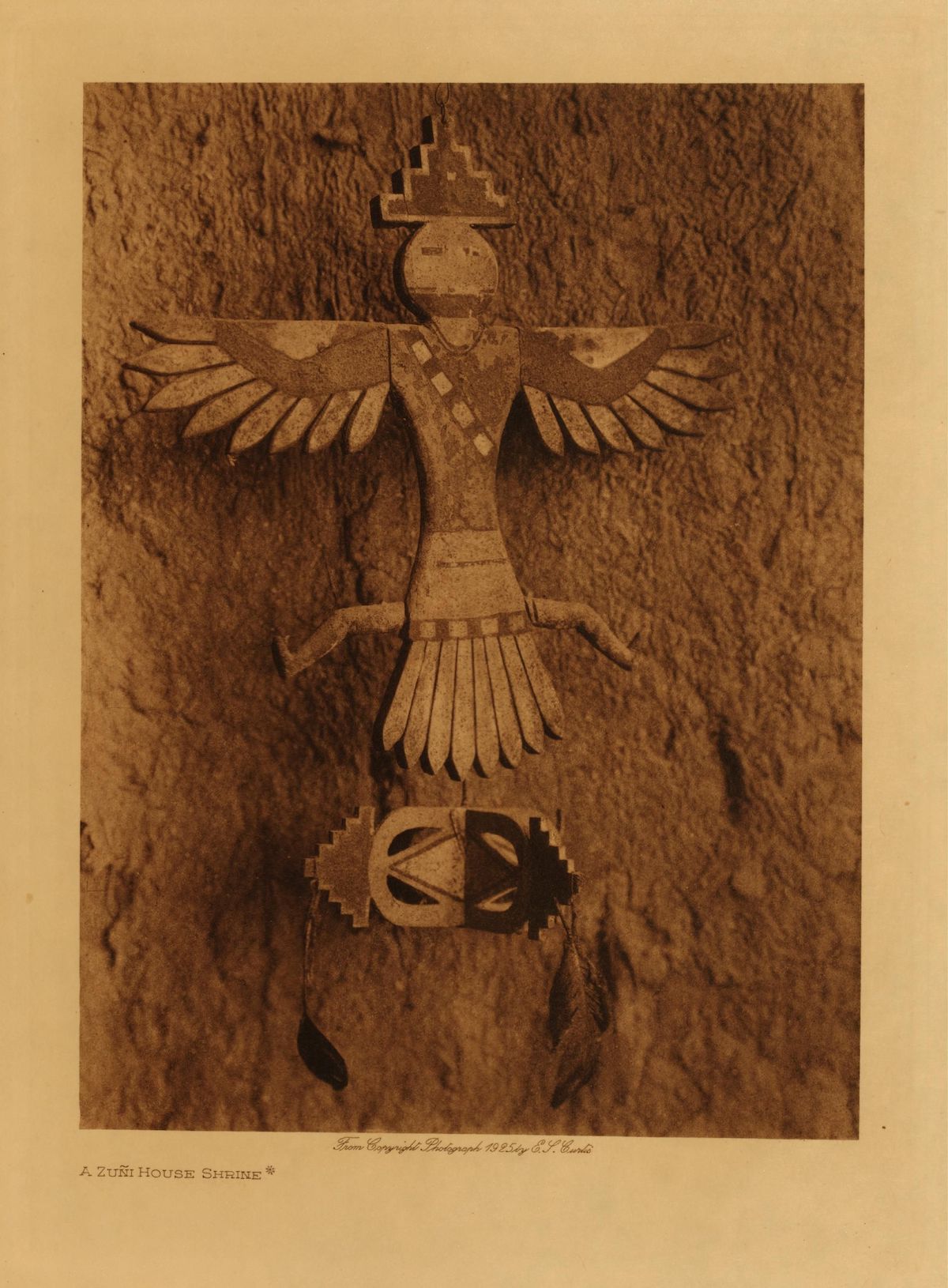
A Zuñi House Shrine
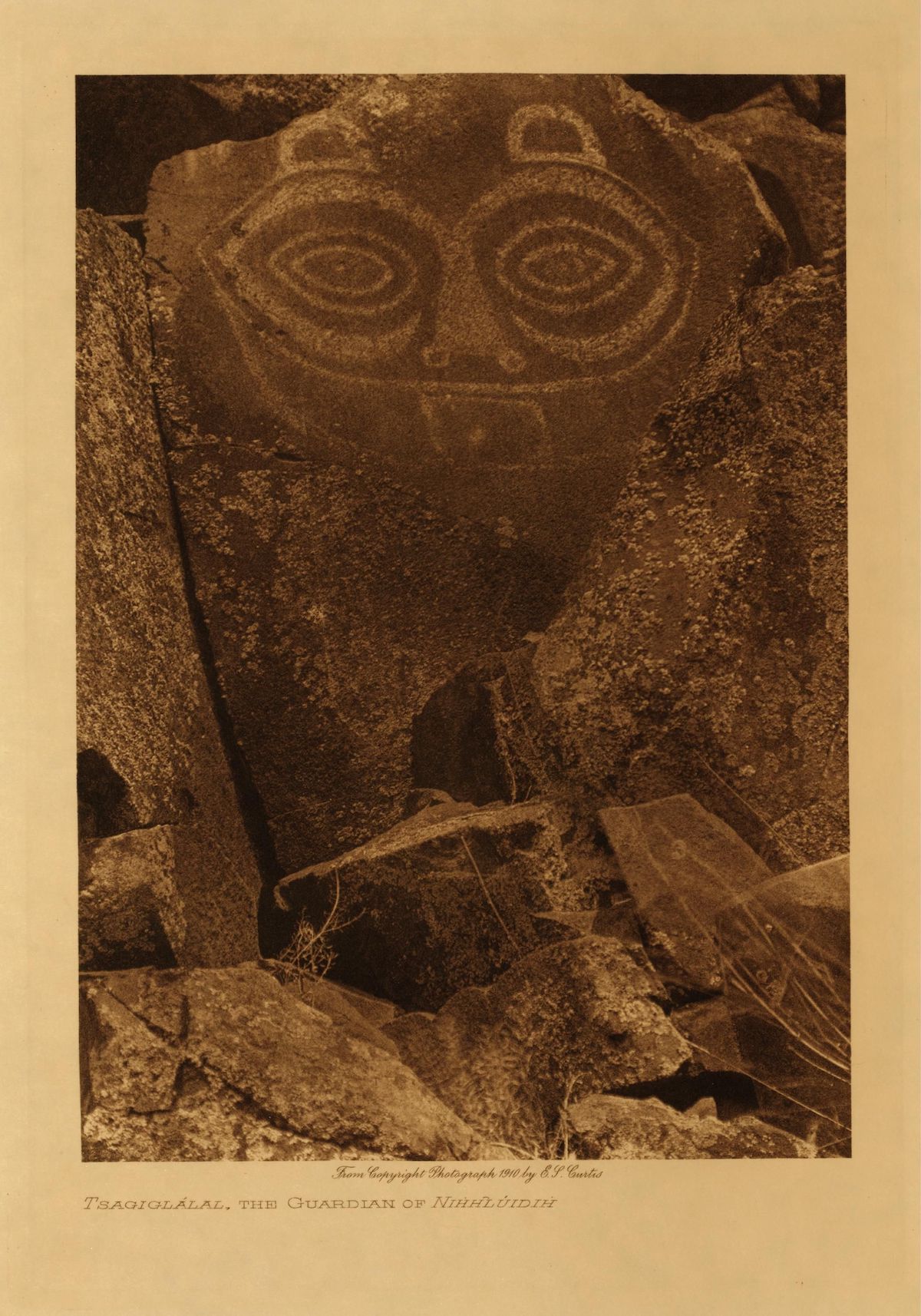
Tsagiglálal, the Guardian of Nihhlúidih
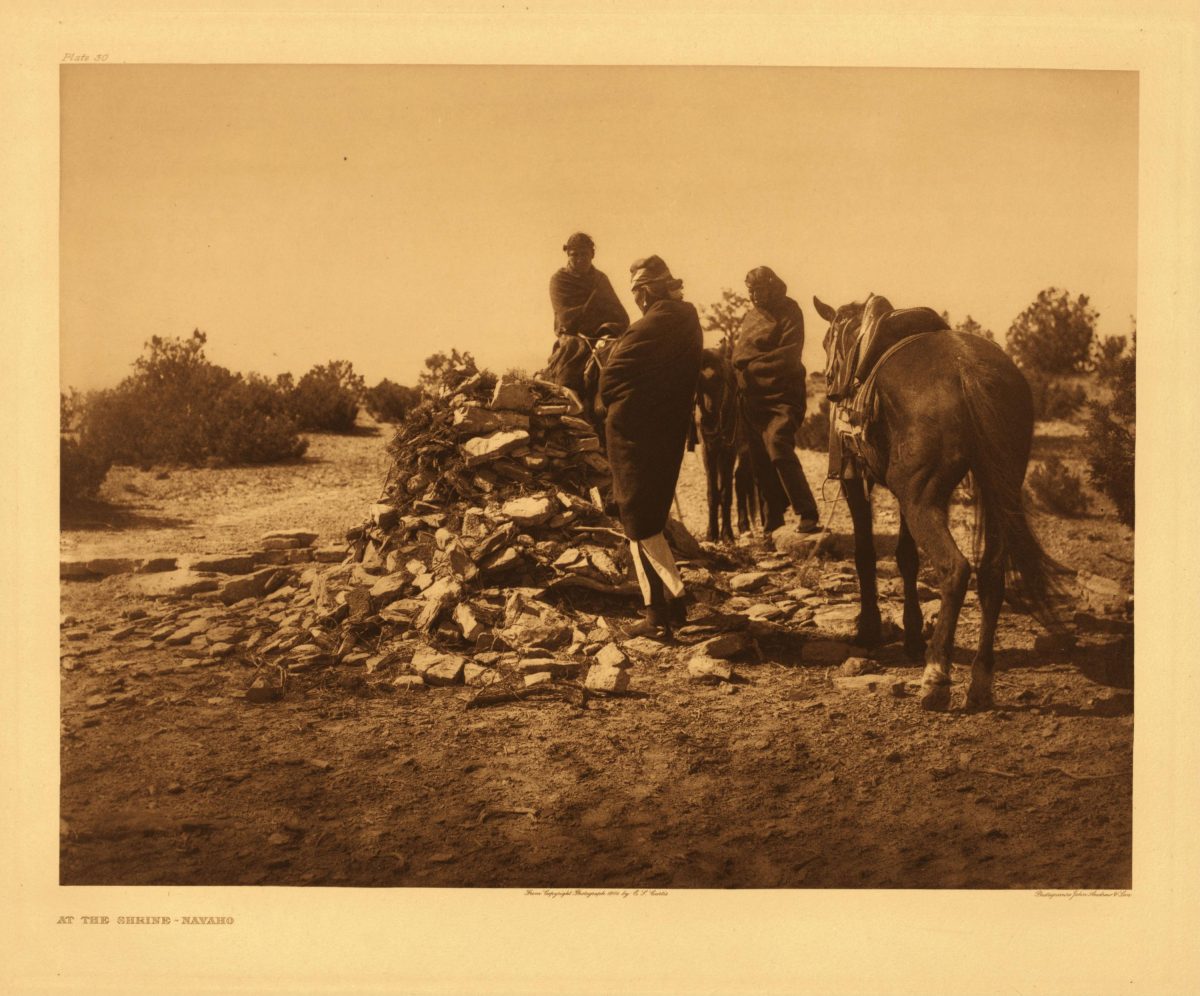
Scattered about the Navaho reservation are many cairn shrines. The Navaho, when alone or in parties, on approaching one of these gathers a few twigs of piñon or cedar, places them on the shrine, scatters a pinch of sacred meal upon it, and makes supplication for that which he may habitually need or which the moment demands.
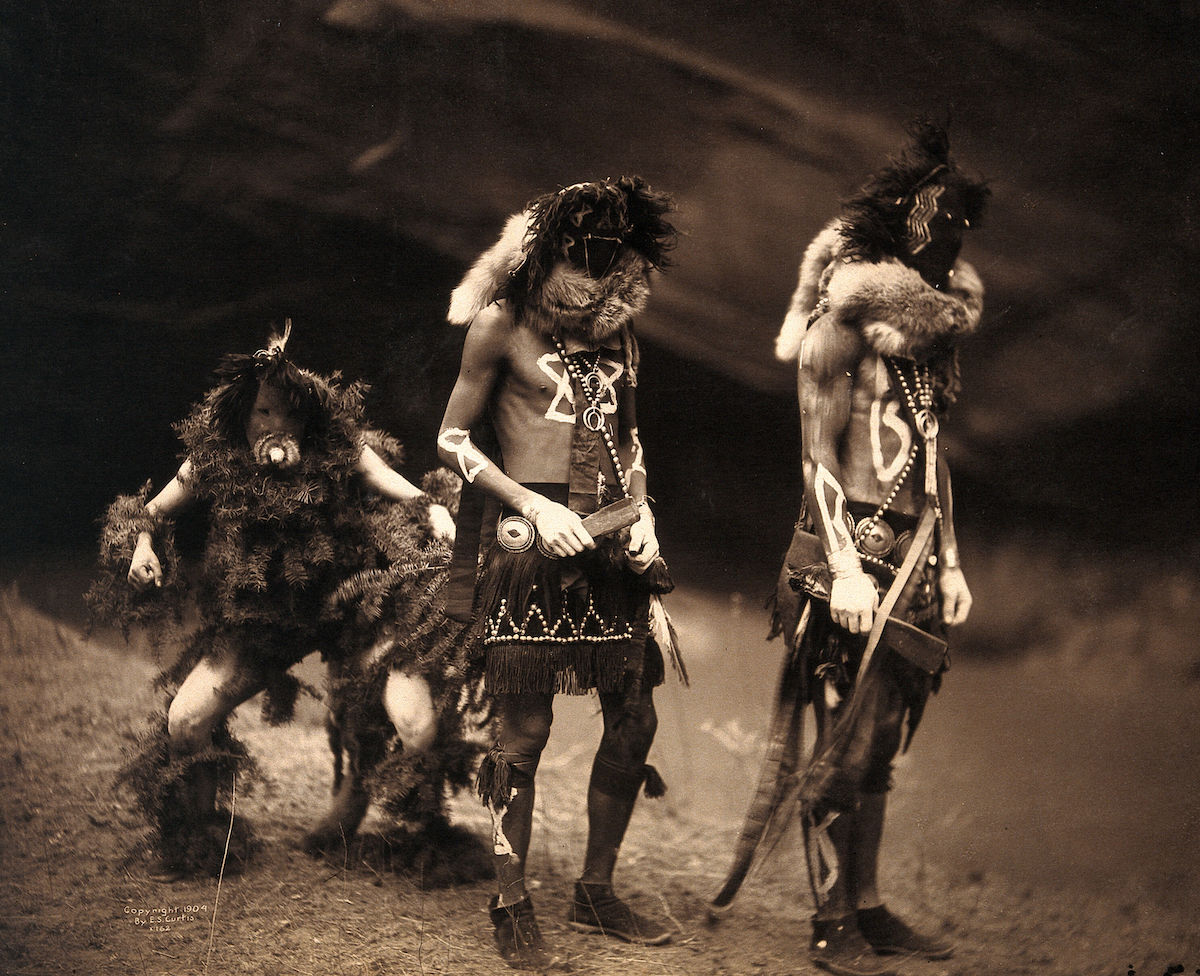
Three Navajo men proceeding as war gods- Tonenili, Tobadzischini and Nayenezgani. Photograph by Edward S. Curtis, 1904. Curtis, Edward S., 1868-1952. Date- 1904
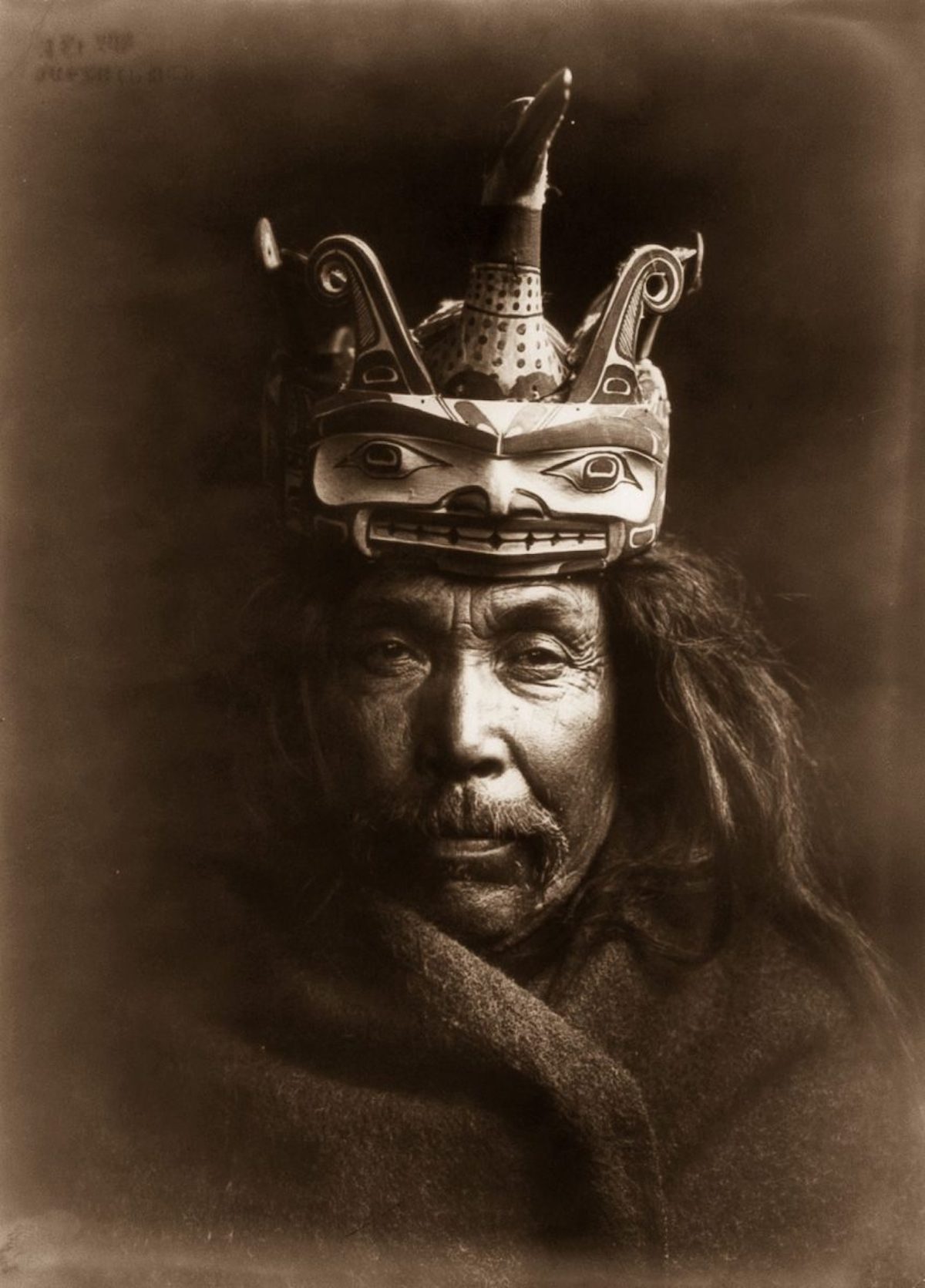
Buy Edward Curtis art and more in the shop.
Via: Northwestern,